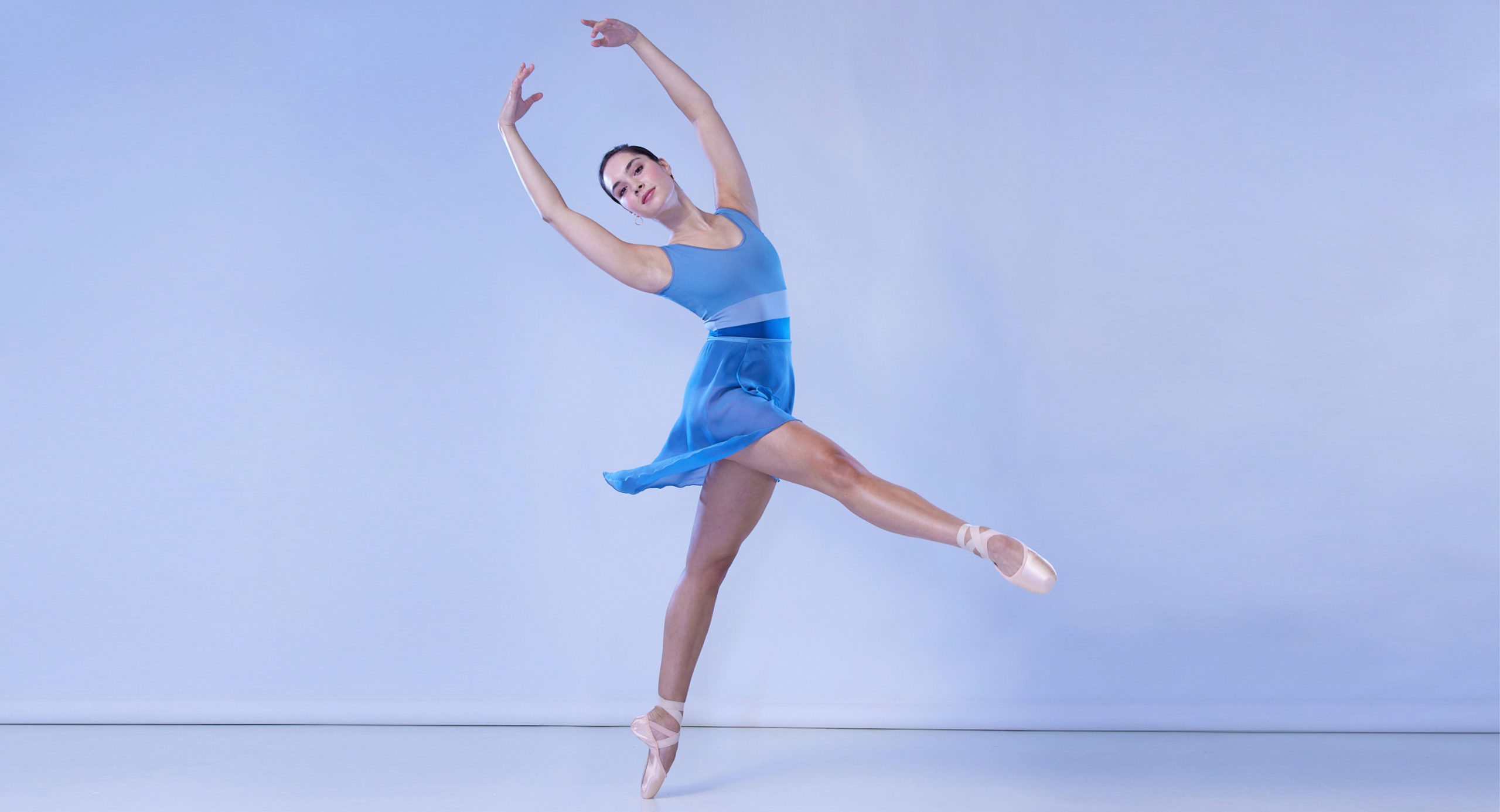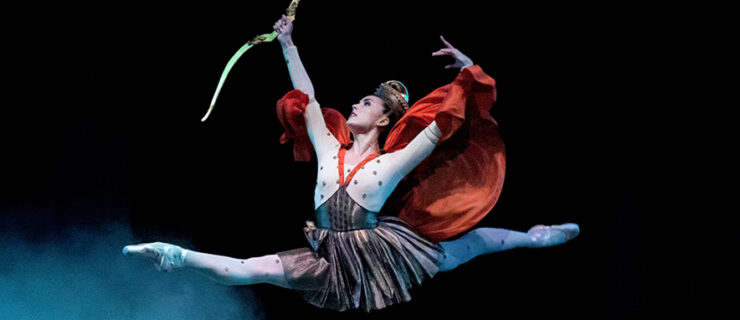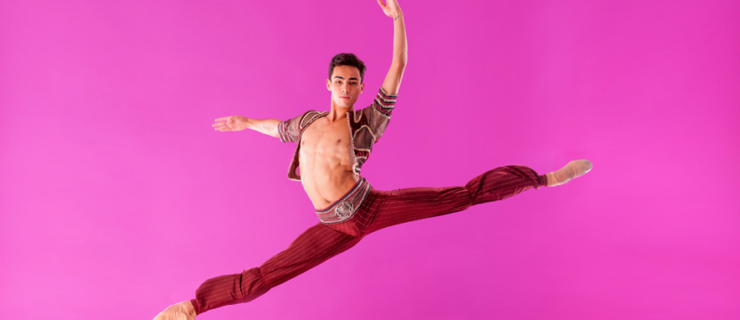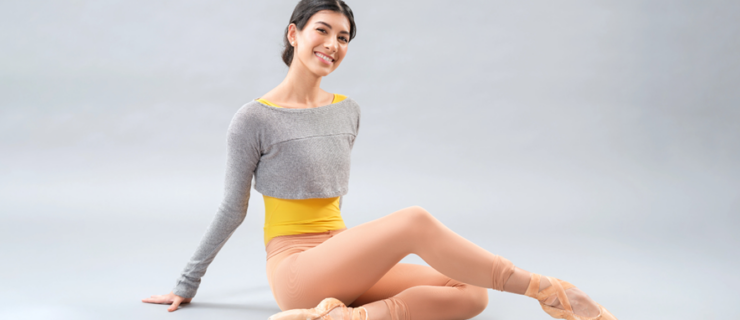New York City Ballet’s Mira Nadon: An Artist Beyond Her Years
In December 2019, the New York Times listed New York City Ballet corps dancer Mira Nadon alongside Billie Eilish and Lizzo as one of the year’s biggest breakout stars. Nadon, then 18, had just made her debut in George Balanchine’s “Rubies,” taking on the fiery lead with a dazzling mix of risk-taking, self-assurance and charisma that nodded to a sense of artistry well beyond her years. And, indeed, it’s this quality that’s made Nadon a standout since her days as a student at the School of American Ballet.
“What I love about Mira is she’s an individual, she’s not trying to fit in some box,” says Jonathon Stafford, NYCB’s artistic director. “She’s just a true artist. She’s herself when she’s onstage, whether she’s in the corps or in a soloist role.” Since joining NYCB as an apprentice in 2017, Nadon, now 20, has made her mark across the company’s repertoire in ballets ranging from Balanchine’s Raymonda Variations to Justin Peck’s Bright. She was also spotlighted in new works by Pam Tanowitz and Sidra Bell. With her leggy physique and bold, made-for-stage features, Nadon is quickly becoming one of NYCB’s most talked-about dancers. Yet Nadon doesn’t let the attention get to her head; unlike many young dancers, she didn’t grow up dreaming of stardom, a trait that allows her to take a measured, mature approach to whatever’s thrown her way.
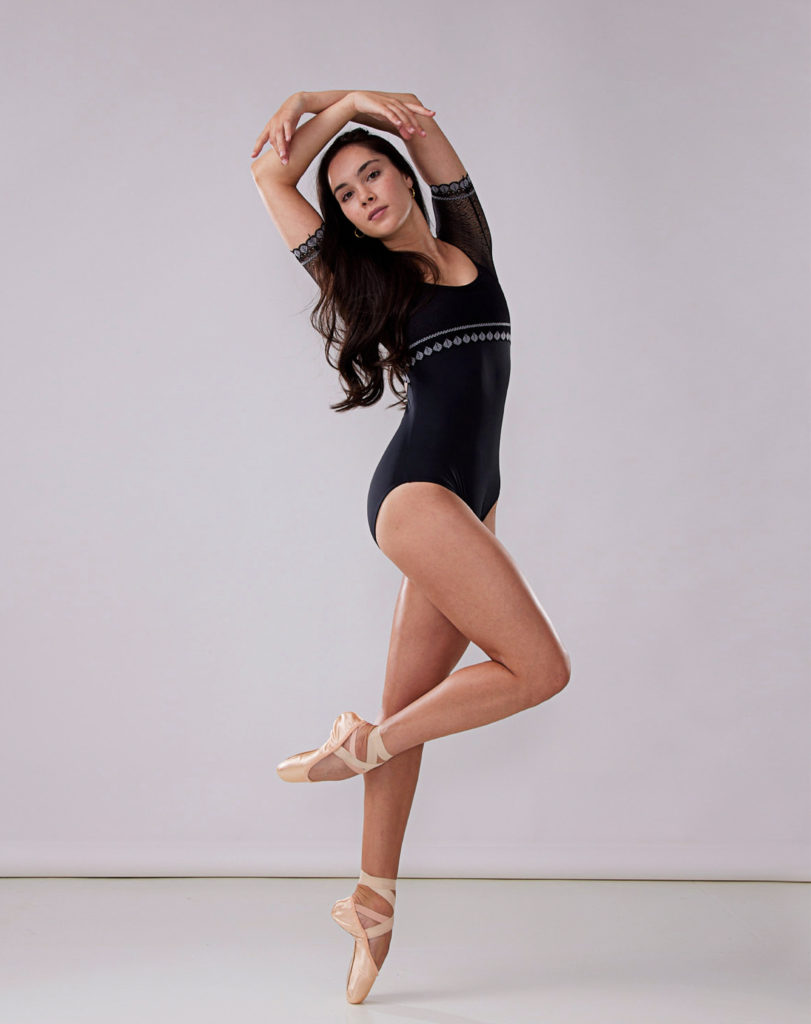
Discovering Balanchine
Born in Boston, Nadon grew up alongside her twin brother, Benjamin, in a close-knit, academically oriented family. Her father is a professor of government, and her mother, who was born in India, was a lawyer. When Nadon was 5, her father got a job teaching at Claremont McKenna College and moved the family cross-country to California. Soon Nadon started taking ballet classes at the Inland Pacific Ballet Academy in Montclair. “I got really lucky that the school 10 minutes away from my house had great training,” she says.
IPBA is linked to a regional company, giving Nadon plenty of chances to perform growing up. She credits this experience with the sense of ease she feels onstage today. “She was a delight to teach,” says Victoria Koenig, one of Nadon’s early teachers. “She was eager, smart, very focused, and excelled always.”
Nadon took ballet seriously, but she never imagined that it could turn into a career. “I just had no thought of even being a professional, it just seemed like such a faraway world,” she says. Then the summer she was 12, she learned excerpts from Balanchine’s Serenade and “Emeralds” at IPBA’s intensive, and fell in love the choreographer’s work. “I rented the Jewels DVD, which led me to finding YouTube videos about Balanchine and NYCB and I was just super-fascinated by it,” she remembers.
Over the following year, Nadon worked to convince her parents to let her audition for the School of American Ballet’s summer intensive. “I think it was just a hesitancy of the unknown,” she says of their initial apprehension. “My parents were very cautious, because they’d heard stories of crazy companies where everyone has eating disorders and it’s really toxic, but they realized that it was an incredible opportunity.” And indeed, her first summer at SAB felt like a lightbulb going off. She returned the next year, and was asked to stay for the winter term. At 14, Nadon moved to New York City and into SAB’s dorms.
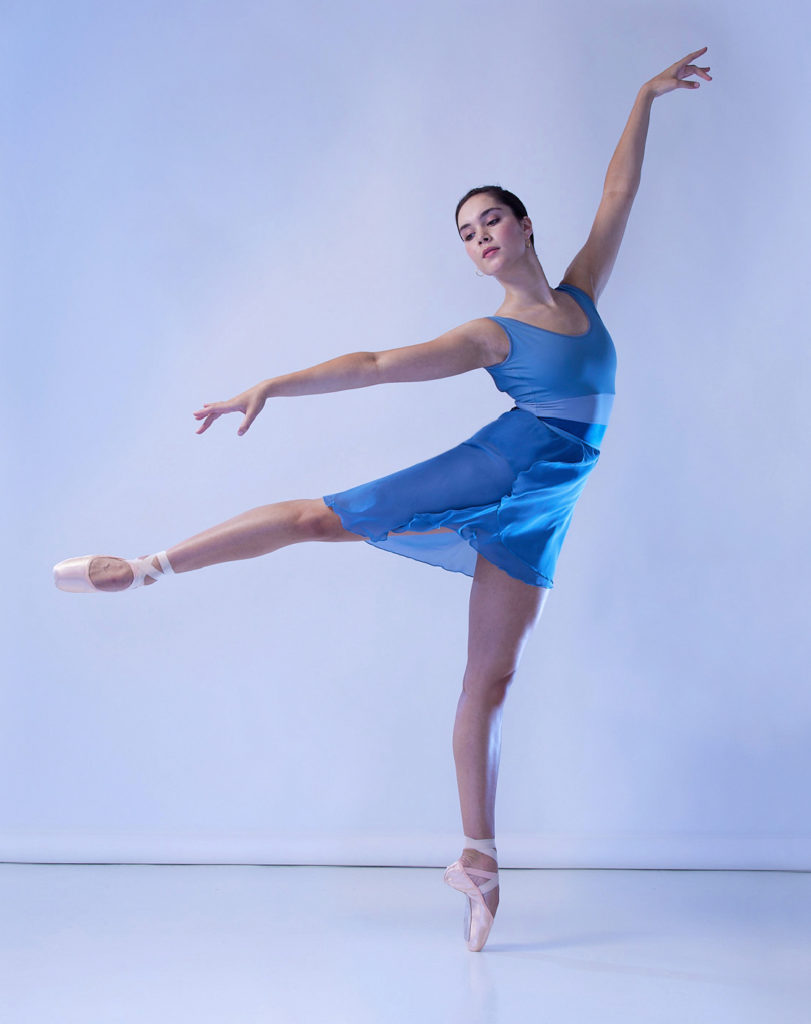
From Student to Budding Star
Nadon smoothly transitioned into life at SAB, enrolling in high school at the Professional Children’s School, making close friends and soaking up new information. “I’ve always been pretty independent, so it wasn’t too much of a struggle to be on my own in the dorms,” she says.
Nadon is relatively quiet and unassuming in the studio (displaying what Stafford calls a “discreet energy”), but she’s one of those dancers who truly comes to life onstage. She was first given the chance to shine at the end of her second year, at SAB’s workshop performance, in the principal role of Balanchine’s Scotch Symphony. “We were all falling out of our seats,” remembers Stafford. “We were seeing a young woman announcing to the world that she’s really a ballerina. The full package was coming together in that moment.”
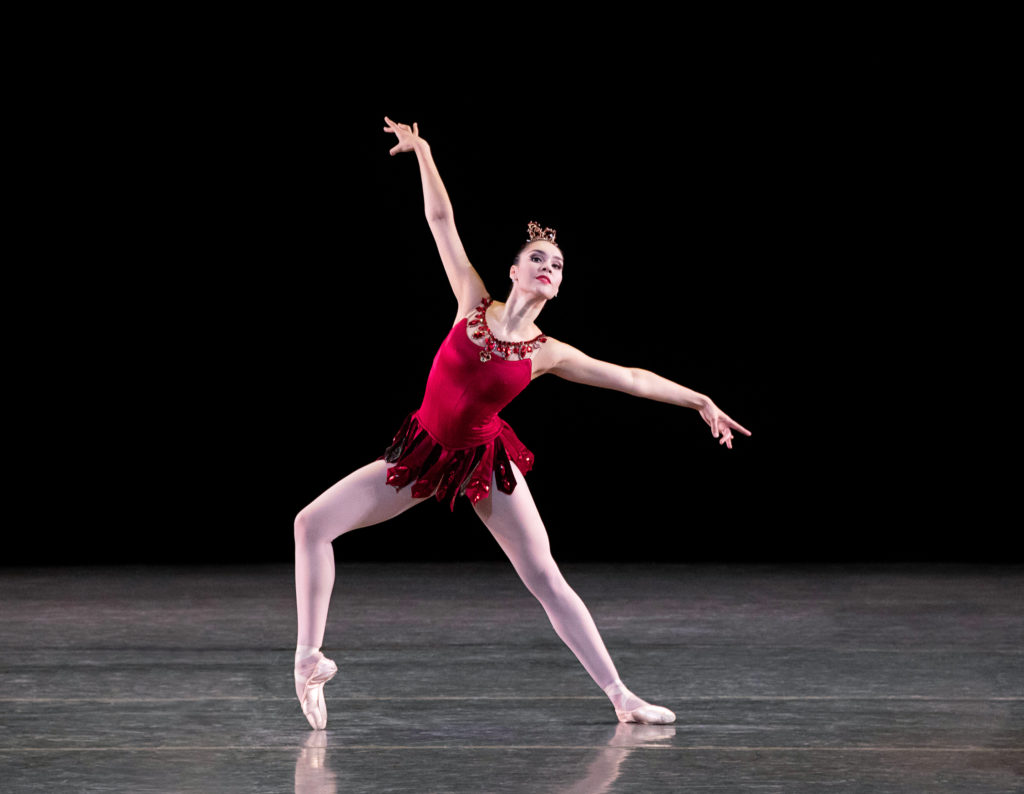
From there, things started moving quickly. The following November, Nadon was called into SAB faculty chairman Kay Mazzo’s office. She found Stafford and then–NYCB-ballet-master-in-chief Peter Martins waiting there, and was offered an apprentice contract on the spot. She was scheduled to jump into Nutcracker rehearsals the next morning. “It was definitely a whirlwind, and a sleepless night,” says Nadon, but she says that she wouldn’t have wanted it any other way. “I didn’t have time to stress out or overanalyze anything. It was nice to just be dropped in!”
Company Life
When Nadon joined the company in 2017, she was only 16. She continued to live in SAB’s dorms for her first year, and fit in high school classes alongside the grueling company schedule. A regular day during those first few months started with two academic periods at the Professional Children’s School before running to the theater in time for company class. As soon as she graduated from high school, Nadon enrolled at Fordham University (she’s now near the end of her sophomore year).
Nadon was promoted to the corps in November 2018. Like most new company members, Nadon spent many rehearsals in the back of the studio, watching her colleagues work. “You can learn so much,” she says of the experience. Observing them, she’d visualize the steps in her mind the way she’d want to do them, mentally searching the music for places to accent. Paying such close attention paid off; Nadon started regularly filling in for dancers who were injured at the last minute. “It was a chance to prove that I was reliable, that I could go out there with short notice and I knew my stuff,” she says.
Nadon’s first big break came when she was cast in “Rubies” in 2019. She couldn’t help but feel intimidated; as a student she’d loved watching principal Teresa Reichlen in the role. “I remember thinking that I didn’t know if I’d ever have the presence and the authority to dance it,” she says. Nadon had also always thought of herself as more of a classical dancer; when watching Jewels growing up, she’d imagined herself in the regal world of “Diamonds” rather than the jazzy realm of “Rubies.” Nevertheless, once onstage she surprised even herself. “She approaches her soloist and principal roles with a cool confidence,” says Stafford. “She’s got a demeanor that doesn’t show the frantic energy that comes with doing a big debut. It lends itself well to the pressure cooker of being in Lincoln Center on that big stage.”
And the roles have kept coming; in 2020, just before the start of the pandemic, Nadon was given the chance to dance the Balanchine/Stravinsky diptych Monumentum pro Gesualdo and Movements for Piano and Orchestra, in which she was coached by Suzanne Farrell. “It was so surreal to be in the studio with her,” says Nadon, who credits Farrell as a major inspiration.
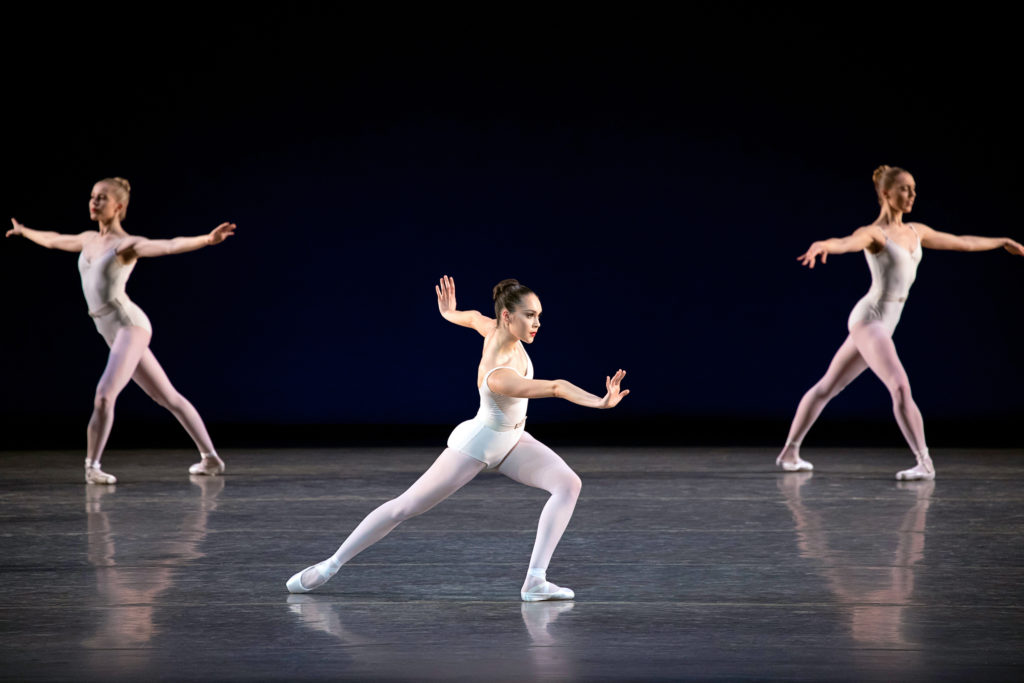
Pandemic Pause
Nadon’s career was just picking up speed when the pandemic stopped it in its tracks. She flew home to California in March 2020 for what she thought would be two weeks; the visit turned into five months. But Nadon made the best of it, adjusting to Zoom class in her living room, upping her college-course load and teaching at her childhood studio. Having left home so young, she appreciated the quality time with her family. But being away from NYCB also made her realize how much fulfillment she gets out of performing.
Luckily, by last fall, a series of opportunities to work in COVID-safe pods came her way. She did gigs in Florida and in upstate New York, and worked with Sidra Bell on a premiere for NYCB’s digital season. In the film, pixilation in a wave (Within Wires), Nadon takes on Bell’s angular, modern style, dancing in a one-shouldered white unitard on Lincoln Center’s verdant campus. “She has a really simple elegance to her work,” says Bell. “She’s mature beyond her years. I appreciated her rigor and her ability to absorb new ideas in each rehearsal. It felt like the movement slipped onto her really easily.”
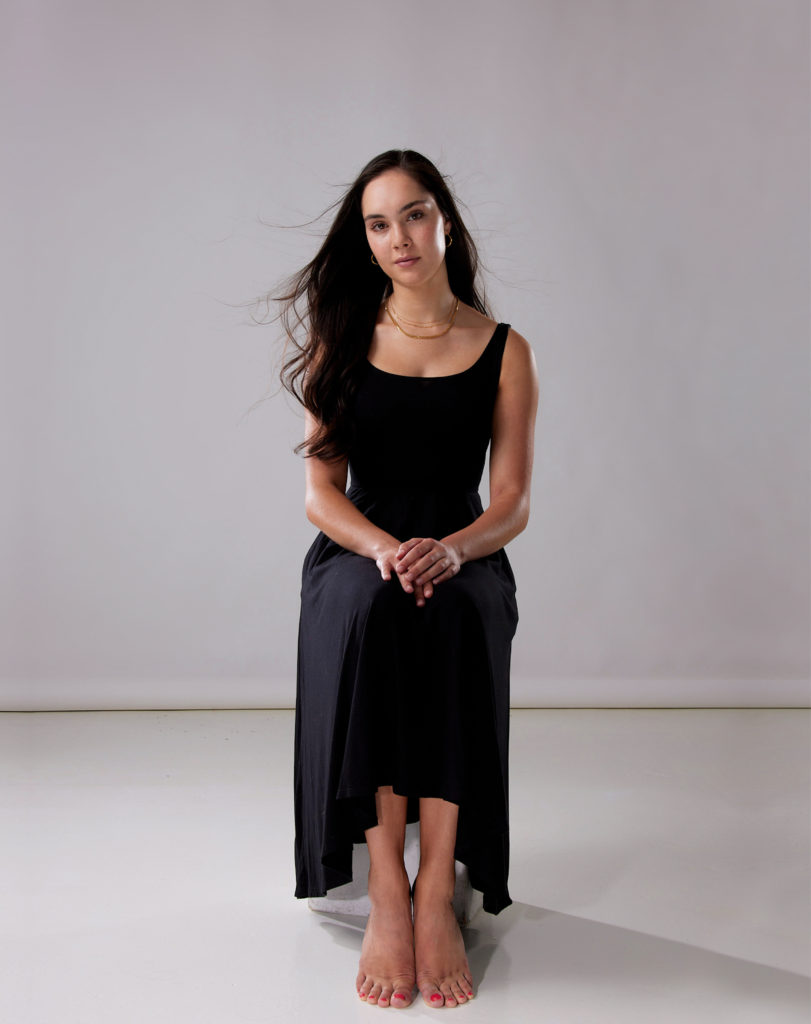
Now Nadon is easing back into her pre-pandemic life in New York City. She shares an Upper West Side apartment with her roommate, NYCB corps dancer Davide Riccardo. (The two became friends at SAB while working as partners in Scotch Symphony.) After a winter spent jockeying for class space in their cramped kitchen, she’s back in the studio. And although she sprained her ankle shortly after returning, Nadon has since recovered and is now preparing for the Vail Dance Festival. When she’s not dancing, she enjoys reading in the park and hanging out with her friends. “It’s just nice being out and enjoying all the things that we took for granted,” she says.
With the company’s planned return to the stage come fall, things are sure to rev up again for Nadon. Though she’s in no rush to get to the next step of her career, she does dream of dancing Serenade, Mozartiana and the pas de deux from “Diamonds.” Stafford lists Mozartiana and “Diamonds” among his hopes for Nadon, as well. “They’re meaty, artistic roles where there’s lots of room for interpretation,” says Stafford. “We know she’ll bring her unique take to them.”
